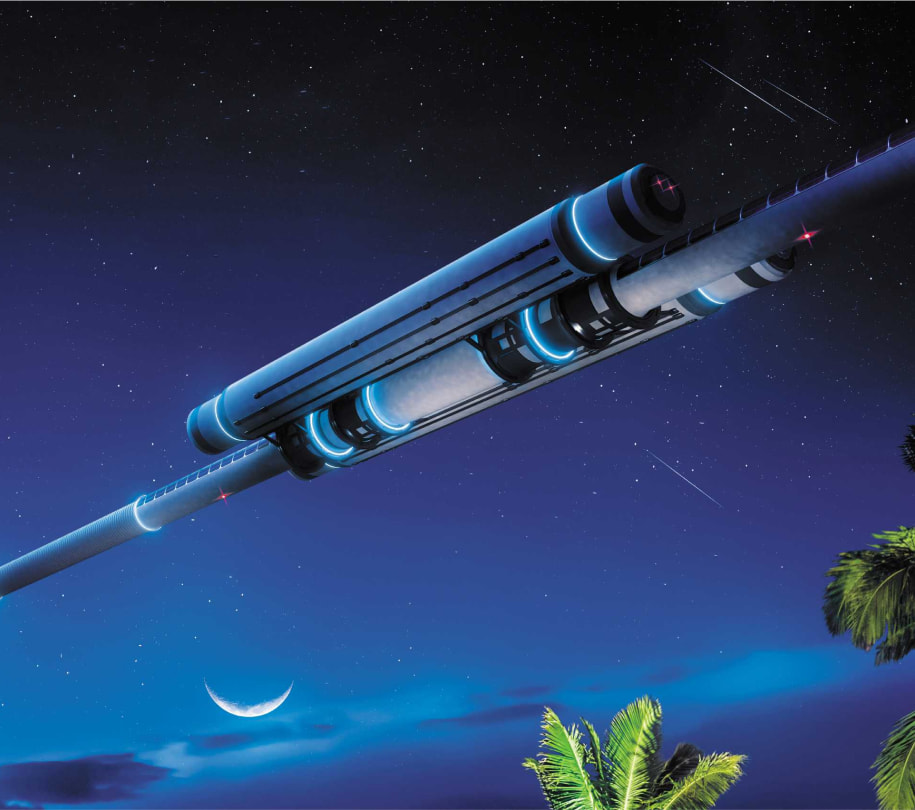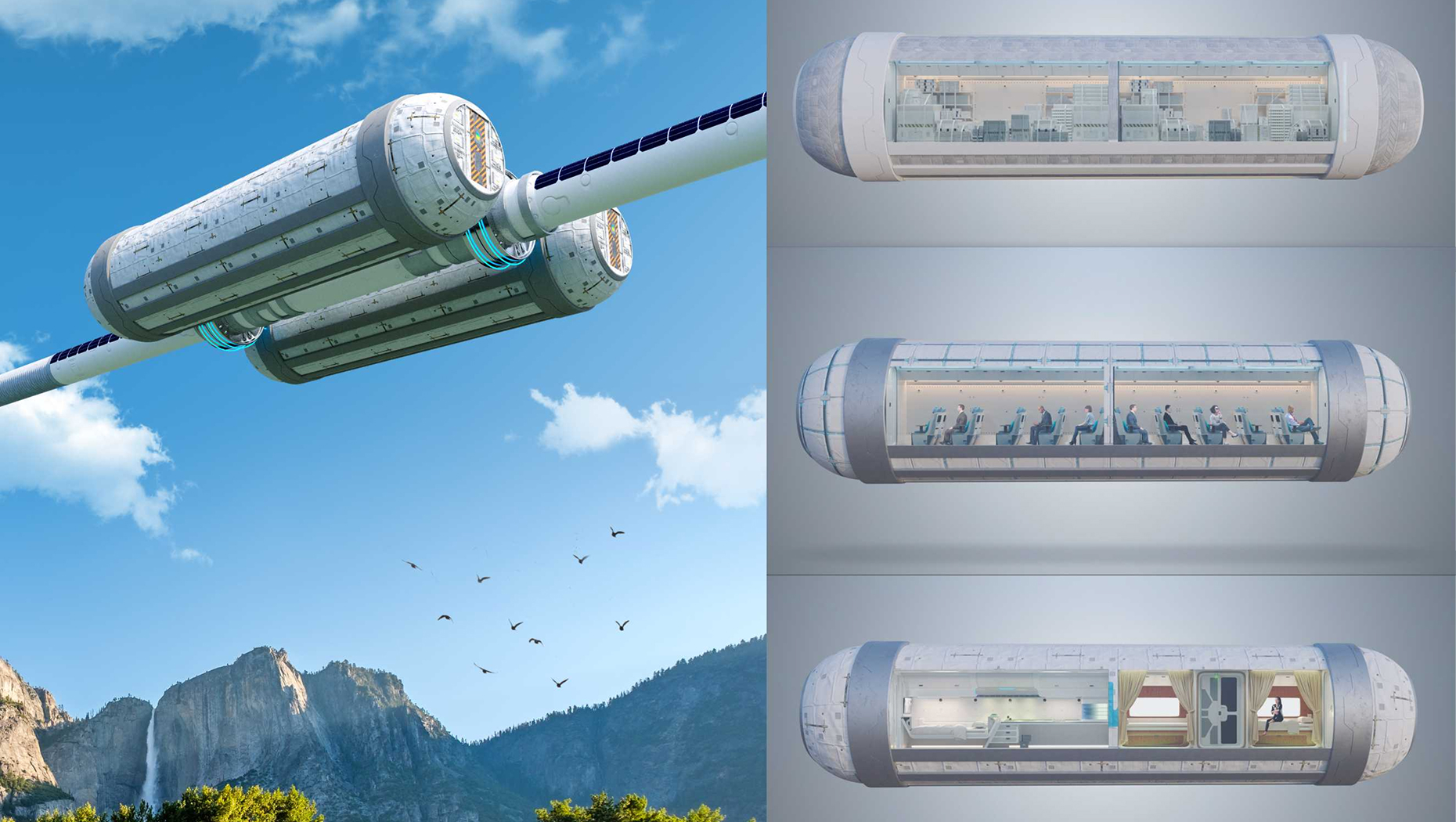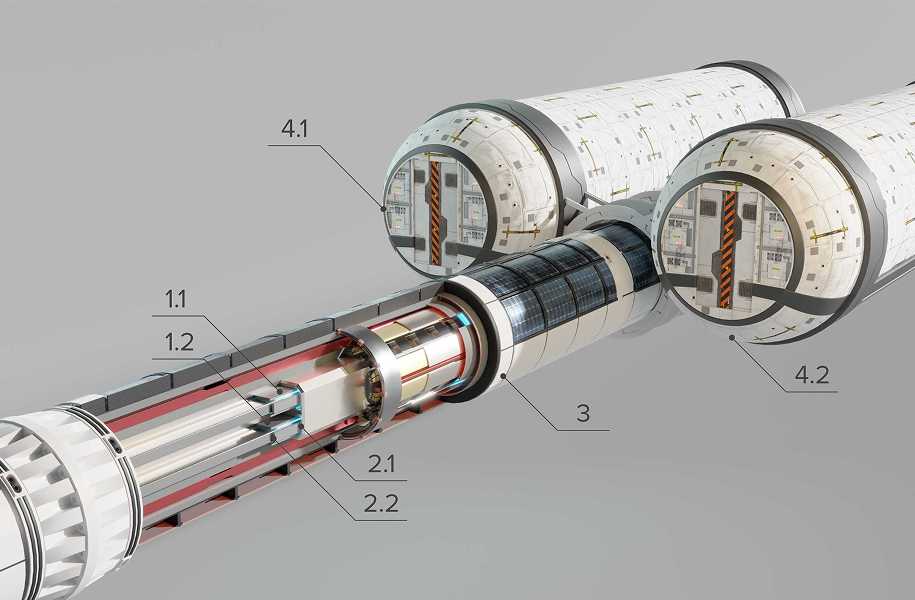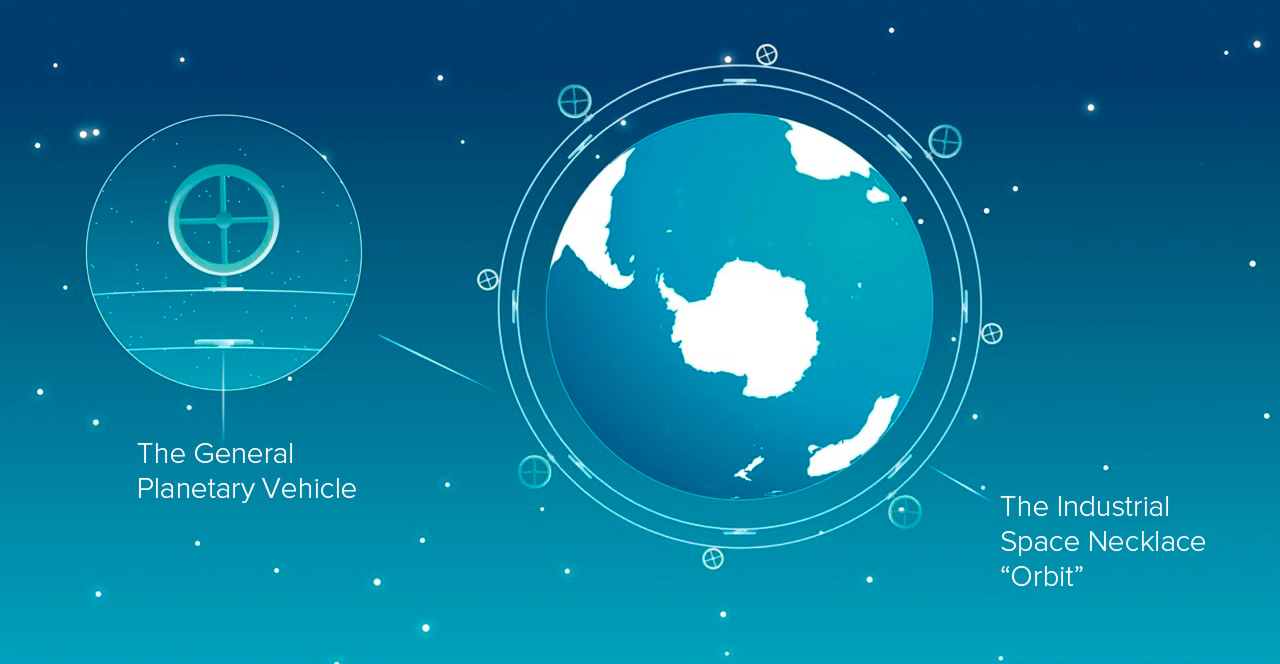To provide the GPV with starting electric energy, it is more expedient to have own power plants, which will allow to distribute the energy within the geocosmic system at a net cost of about USD 0.05 per kWh.
Therewith, the additional energy can be taken from the network of countries in the equatorial belt of the planet, where the GPV launch overpass will be located.
The cost of the total energy Е₀ required for the first GPV launch will be: 420 billion kWh × USD 0.05/(kWh) = USD 21 billion, and the specific one (upon the total payload of 10 million tons) will be equal to USD 2100 per ton. Moreover, once accelerated, the flywheels can rotate inside the vacuum channels for years, because a magnetic cushion on permanent magnets, like vacuum, will not create resistance when they move at cosmic velocities. This means that the energy consumption for the second and subsequent GPV flights will be associated only with a part of the total energy proportional to the cargo carried, as well as with internal energy losses which are estimated at no more than 10 %.
Although theoretically they can be reduced to 5% and even lower to 2-3%. In the case when the GPV begins to rise up, it will transfer energy to the Earth’s cargo, and when descending, as the falling water of a hydroelectric power plant, on the contrary, the cargo from space will transfer its potential and kinetic energy to the GPV. After the creation of space industry, the main cargo flow will be carried out from space to Earth, and the GPV will stop spending energy and begin to generate electricity transmitted through the cargos from space, operating, among other things, as a giant equatorial dynamo with a total capacity of about 100 million kW




